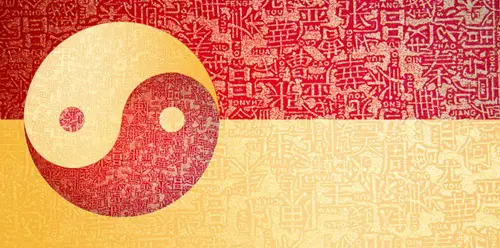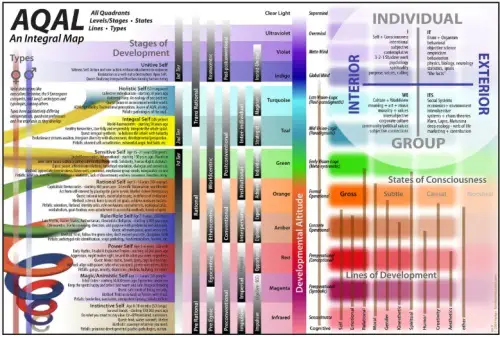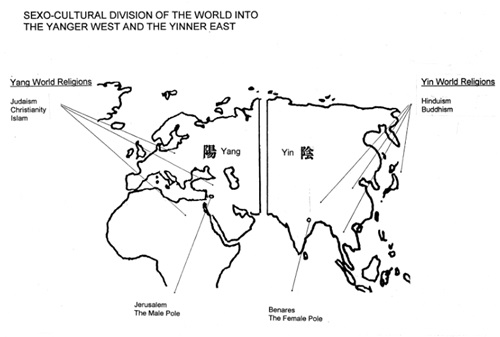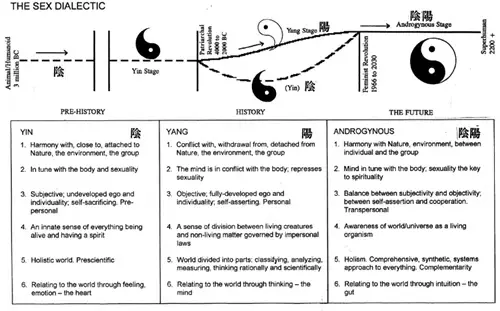The rise of China in an integral context, Jan Krikke (original) (raw)
TRANSLATE THIS ARTICLE
Integral World: Exploring Theories of Everything
An independent forum for a critical discussion of the integral philosophy of Ken Wilber
 Jan Krikke is a former Japan correspondent for various media and former managing editor of Asia 2000 in Hong Kong. He pioneered the study of axonometry, the Chinese equivalent of European linear perspective overlooked by Jean Gebser. He is the author of several books, including Leibniz, Einstein, and China, and the editor of The Spiritual Imperative, a macrohistory based on the Indian Varna system by feminist futurist Larry Taub.
Jan Krikke is a former Japan correspondent for various media and former managing editor of Asia 2000 in Hong Kong. He pioneered the study of axonometry, the Chinese equivalent of European linear perspective overlooked by Jean Gebser. He is the author of several books, including Leibniz, Einstein, and China, and the editor of The Spiritual Imperative, a macrohistory based on the Indian Varna system by feminist futurist Larry Taub.
Reposted from Asia Times, May 28, 2022, with permission of the author
Roots that have grown over 2,500 years are not easily lost
Jan Krikke

The consciousness-raising hippie movement in the West during the 1960s led to growing interest in Eastern spirituality. While the movement largely dissolved in the 1970s, its spirit lived on in the New Age Movement. Millions of people embraced meditation and personal growth.
But society as a whole became more polarized, more conservative, and less equitable. Meanwhile, China, by most measures not very “new age,” has been setting the table for the 21st century. What happened?
In 1977, the American philosopher Ken Wilber published The Spectrum of Consciousness, a groundbreaking synthesis of religion, philosophy, physics, and psychology. Wilber developed a framework (AQAL) that integrates all human wisdom into a new worldview.
Considered the founder of the Integral Movement, Wilber also helped to popularize Spiral Dynamics, a system that described evolving human consciousness.
Wilber's Integral Theory and Spiral Dynamics (SDi) argue that human consciousness developed in eight stages, each with distinct psychological traits. Humanity went from the Instinctive Self (100,000 years ago) to the Achiever Self (300 years ago) to the Sensitive Self (beginning in the 1980s). The highest level is the Holistic or Unitive Self, when we transcend all dualities and feel unity with all that exists.
In the SDi framework outlined below, Northern Europe is usually regarded as the most advanced region. Scandinavian countries are green and orange because of their high level of social and gender equality, environmental awareness, etc. Most developing countries are considered either blue or orange. Uncontacted tribes in South America would be either beige or purple. All of humanity goes through the eight stages, broadly defines as follows:
- Beige (Archaic/Instinctive): Basic survival needs: food, water, warmth, rest, sex, and safety.
- Purple (Magical/Animistic): Tribes, spirits of nature, mysterious powers, magic, rituals, taboos, spells, voodoo.
- Red (Domination/Egocentric): Fulfill one's desires to the detriment of others. Cult of heroes. Powerful gods. Slavery.
- Blue (Order/Authoritarian): Conformity, respecting procedures and traditions. Absolute authority of religion and/or rulers.
- Orange (Achievement/Materialistic): Creativity, competition, technological progress, entrepreneurialism, capitalism.
- Green (Relativistic/Communitarian): Egalitarianism, pluralism, environmentalism, sharing community.
- Yellow (Systemic/Integrative): Self-development, continuous learning, hierarchies based on knowledge and competency.
- Turquoise (Holistic/Interconnected): Global thinking culture, collective intelligence, driven by harmony and tranquility.
The SDi model consists of three stages: Tier 1, Tier 2 and Tier 3. They correlated with a developmental model of psychology that has three successive stages: the prepersonal (before ego-formation), the personal (the functioning ego), and the transpersonal (the ego remains available but is superseded by higher development). The transpersonal level (the Unitive Self in SDi ) has access to “ultimate reality.”

The AQAL model developed by Ken Wilber and Don Edward Beck.
Crossing cultures
The SDi model is highly sophisticated and valuable for personal development. But can it be applied to entire cultural-geographical regions, and countries as different as China and the US? In SDi's framework, China is predominantly blue, the US mostly green. But things look different from a Chinese perspective.
The modern Confucian scholar Tu Weiming argues that Chinese culture is much more nuanced, holistic, integrative and “spiritual” than most people think. The likely reason: Much of the outside world looks at China through an ideological prism. China's political system obscures the substrate of Chinese culture.
Even under Mao Zedong, China never stopped being Confucian. Roots that have grown over 2,500 years are not so easily lost. For the Chinese, Confucianism is “the habit of the heart.” Even for the current government, Confucius is the reference point. Every Chinese government official has read the Confucian classics that stress the importance of self-cultivation.
Tu Weiming points out that Confucian self-cultivation is not strictly focused on the self. Rather, it is about “learning how the body and mind can be integrated within the context of family, community, society, nation, and the universe.” This explains why the Confucian classics are rich in aphorisms that stress the importance of self-cultivation in the larger context:
- If there be righteousness in the heart, there will be beauty in the character.
- If there be beauty in the character, there will be harmony in the home.
- If there be harmony in the home, there will be order in the nation.
The Female Principle
The 1960s gave not only birth to the consciousness-raising hippies and the New Age movement, but it also marked the start of feminism, which impacted the consciousness of women everywhere. The American futurist Lawrence Taub, author of the book Sex, Age, and the Last Caste, argues that women, or rather the Female Principle, are playing a key role in transforming global society.
In his Sex Model, Taub uses the yin-yang principle to describe the interplay between the Female and the Male Principle throughout history on a macro level. He explains that in pre- and early history, humanity was primarily yin (matriarchal). About 3,000 years ago, following the age of Confucius, Buddha, Plato, and other sages, it gradually became more yang.
The so-called Patriarchal Revolution started at roughly the same time in East and West. But Taub says that the West became extremely yang, while the East retained more of its yin qualities. He called it the Sexo-Cultural Division of the World. Judaism, Christianity, and Islam are yang religions; Hinduism and Buddhism are the yin religions. Jerusalem is the Male Pole, and Benares is the Female Pole.

The Sex-Cultural Division of the World, from Taub's book Sex, Age, and the Last Caste.
In the 19th century, after centuries of male dominance, women reasserted themselves by demanding voting rights. The movement reached critical mass after the Feminist Revolution in the 1960s. Feminism permanently changed gender relationships. Female CEOs became as common as did the stay-at-home dads.
Taub argues that feminism changed the consciousness of both women and men. The balancing of the yin and yang, of the Female Principle and the Male Principle, will gradually lead to a more androgynous society. Taub writes:
“Feminism, the key movement of the Sex Model, changes the consciousness of women everywhere, even of women who think they have no affinity with it or claim not to be feminists. Without the changes in women's consciousness that feminism spawns, men's consciousness would stay in the old, yang mold, as would all of human society.
“Feminism thus creates the underlying consciousness that makes all the other androgynous movements possible. Without it, we would remain forever stuck in the Yang Age.”

The Sex Dialectic from Taub's book Sex, Age, and the Last Caste.
Taub uses his Sex Model to explain the current shift of the world's center of gravity from West to East Asia. Confucian notions like inclusion, reciprocity, and holistic thinking are manifestations of the Female Principle. Other Confucian qualities like integrity, sincerity, humility, and listening well also emanated from the Female Principle, albeit via the “soft masculinity” that characterizes Confucian teachings.
Taub says the Male Principle gave us science and technology, but it also gave us perpetual war and ecological destruction. He argues that holism, consensus-building, reciprocity, and balancing duty and freedom, all part of the Female Principle, will be instrumental in addressing many of the problems facing the world today. East Asia, having stayed closer to the Female Principle, will play a key role in this process.
The guiding principle in Confucianism, and of all aspects of Chinese culture, is the reconciliation of yin and yang—spirit and matter, human and nature, internal and external, being and doing.
The yin and yang form the invisible warp and woof of Chinese culture. But the Female Principle was leading in shaping Confucian culture. A subtle sign is the Chinese view of consciousness: xin. The word is written with a compound character meaning “heart-mind.” Connecting heart (yin) and mind (yang) is an expression of the Female Principle.
In the end, Taub's Sex Model and the SDi's framework for consciousness development cross paths. The androgynous qualities Taub identifies in the Sex Model—harmony with Nature, mind in tune with the body, awareness of our unity with the universe—correlate with Tier 2 and Tier 3 of the SDi framework.
While the two models take different routes to the future, they arrive at the same destination. That is a reason for optimism. It is unlikely that both of them got it wrong.